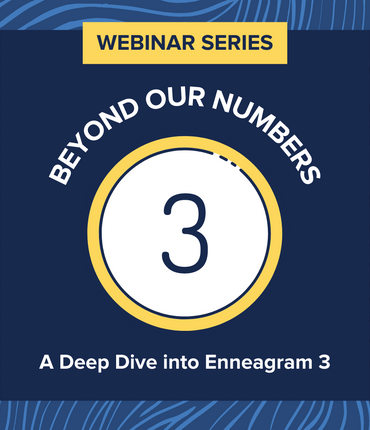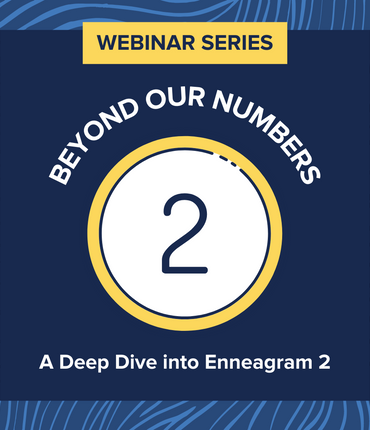WOMEN’S DAY SALE
WHAT IS THE ENNEAGRAM?
Didn’t find an answers to your questions?
The Enneagram consists of nine different numbers, each number representing a different core motivation and core fear. The main motivation and fear that drive the decisions you make, whether you realize it or not, are what really let you discover what your particular number is.
Think of it this way - most of us go through life understanding the world through our singular point of view. Naturally, we believe the way we think and act is THE normal way. The Enneagram tells us there are actually nine very different ways to understand the world. That’s NINE different types of normal.
Truly studying and understanding the Enneagram opens up endless opportunities to understand yourself and the people around you, better.
More than anything, the Enneagram, at its best, helps you develop compassion for yourself and for others, and it is an amazing tool for growth. The Enneagram allows you to see some of the most difficult parts of yourself that you can’t see without intentional reflection. It gives you a blueprint for understanding why you act the way you do. And if you are able to do the hard work and look at those blueprints, you will finally have what you need to begin growing in a long-lasting, transformative way.
WHAT DOES THE ENNEAGRAM LOOK LIKE?
The circle is split into three equal parts with three numbers in each triad. Each triad represents a different way that we process information: with our gut, heart, or head. As human beings, we process things in all three ways, but the triad that your Enneagram number lands in shows you which way you naturally process the most.

THE INSTINCTIVE TRIAD
Lorem ipsum dolor sit amet, consectetur adipiscing elit. Quisque elementum rutrum porta. Duis hendrerit ut lorem.
ALL ABOUT US
Quisque convallis rhoncus ornare
Enneagram numbers 8, 9, and 1 fall into the Instinctive Triad.
Primary Struggle: Wanting to resist and control the environment.
Mindset: "I am what I do."
Wants: Autonomy
Primary Emotion: Anger
Each number within this triad puts their practical wants and needs in the background, ignoring:
Enneagram 8: Rest and Relaxation
Enneagram 9: Priorities, Preferences, Opinions
Enneagram 1: Play and Pleasure
Each number within the Instinctive Triad struggles with issues of control more than the other six Enneagram numbers. They want to affect the world, but not be affected by it. While all three share this same struggle, they each do something different to solve their need for control.
Enneagram 8: Looks to control everything externally. They want to control the things and the people around them. They are often called "The Challenger" because of this tendency.
Enneagram 9: Looks to control everything both internally and externally. They do what the 8s and the 1s do, all at the same time. They want nothing to disturb their own sense of peace or the sense of peace around them. Because of this, they are often called, "The Peacemaker" or "The Mediator."
Enneagram 1: Looks to control everything internally. They want to control their own emotions, their own desires, and who they are. This looks like following all of the rules and doing the right or good thing. They are often called "The Perfectionist" or "The Reformer" due to this tendency.
THE FEELING TRIAD
Lorem ipsum dolor sit amet, consectetur adipiscing elit. Quisque elementum rutrum porta. Duis hendrerit ut lorem.
ALL ABOUT US
Quisque convallis rhoncus ornare
Enneagram numbers 2, 3, and 4 fall into the Feeling Triad.
Primary Struggle: Wanting to find a sense of identity.
Mindset: "I am what other people think of me."
Wants: Attention
Primary Emotion: Shame
Each number within this triad tries to gain approval from
others through:
Enneagram 2: Having a likeable and pleasing image
Enneagram 3: Creating an image of achievement and success
Enneagram 4: Being unique and special
Each number within the Feeling Triad struggles with the lack of a sense of their own identity. They are always looking to shed their false self and disover who they really are. This is harder for them to do than the other six Enneagram numbers. While all three share this same struggle, they each do something different to solve their search for identity.
Enneagram 2: Looks externally to find their sense of identity. They want to be seen in a positive light by others. They do this by giving their energy and attention to others, hoping to be kind, friendly, and helpful enough to be liked. This is why they are often called "The Helper."
Enneagram 3: Looks both internally and externally to find their sense of identity. They try to create a unique internal picture of themselves, while at the same time craving the external validation from others through achievements. This is why they are often called "The Achiever."
Enneagram 4: Looks internally to find their sense of identity. The opposite of a 2, they over-identify with the negative aspects of themselves. They see themselves as different, unique, and unlike anyone else. This is why they are often called "The Individualist."
THE THINKING TRIAD
Lorem ipsum dolor sit amet, consectetur adipiscing elit. Quisque elementum rutrum porta. Duis hendrerit ut lorem.
ALL ABOUT US
Quisque convallis rhoncus ornare
Enneagram numbers 5, 6, and 7 fall into the Thinking Triad.
Primary Struggle: Wanting to find support and guidance.
Mindset: "I am what I have."
Wants: Safety and Security
Primary Emotion: Fear
Each number within this triad experiences fear that causes them to:
Enneagram 5: Detach and minimize their need for others
Enneagram 6: Understand threats and uncertainty
Enneagram 7: Focus on what is positive and exciting
Each number within the Thinking Triad struggles with finding a sense of inner guidance and support. They are always seeking to find safety and security, which they seem to lack internally more than the other six Enneagram numbers. While all three share this same struggle, they each do something different to find that safety and security.
Enneagram 5: Tries to find a sense of security from external things. They are afraid of the external world. They shrink into their own heads and try to figure everything out so that they can be safe from the things around them. They are extremely cognitive and knowledgeable, and that is why they are often called "The Investigator."
Enneagram 6: Tries to find a sense of security from internal and external things. They pull aside for fear of external things like a 5, but then they can't trust even themselves, so they move into external actions. Then, they fear making mistakes and doing the wrong thing, so they pull back internally again. They look for support from others to feel okay, but then they can't trust that support. They tend to be very loyal to the people they love and to their believers. This number is often called "The Loyalist."
Enneagram 7: Tries to find a sense of security from internal things. They are afraid of what is is inside of them. They jump into the next adventure and are always looking for the next thing to do so that they don't have to come in contact with the feelings inside them. This is why the are often called "The Enthusiast" or "The Adventurer."
READ MORE ABOUT THE ENNEAGRAM
It has survived not only five centuries















